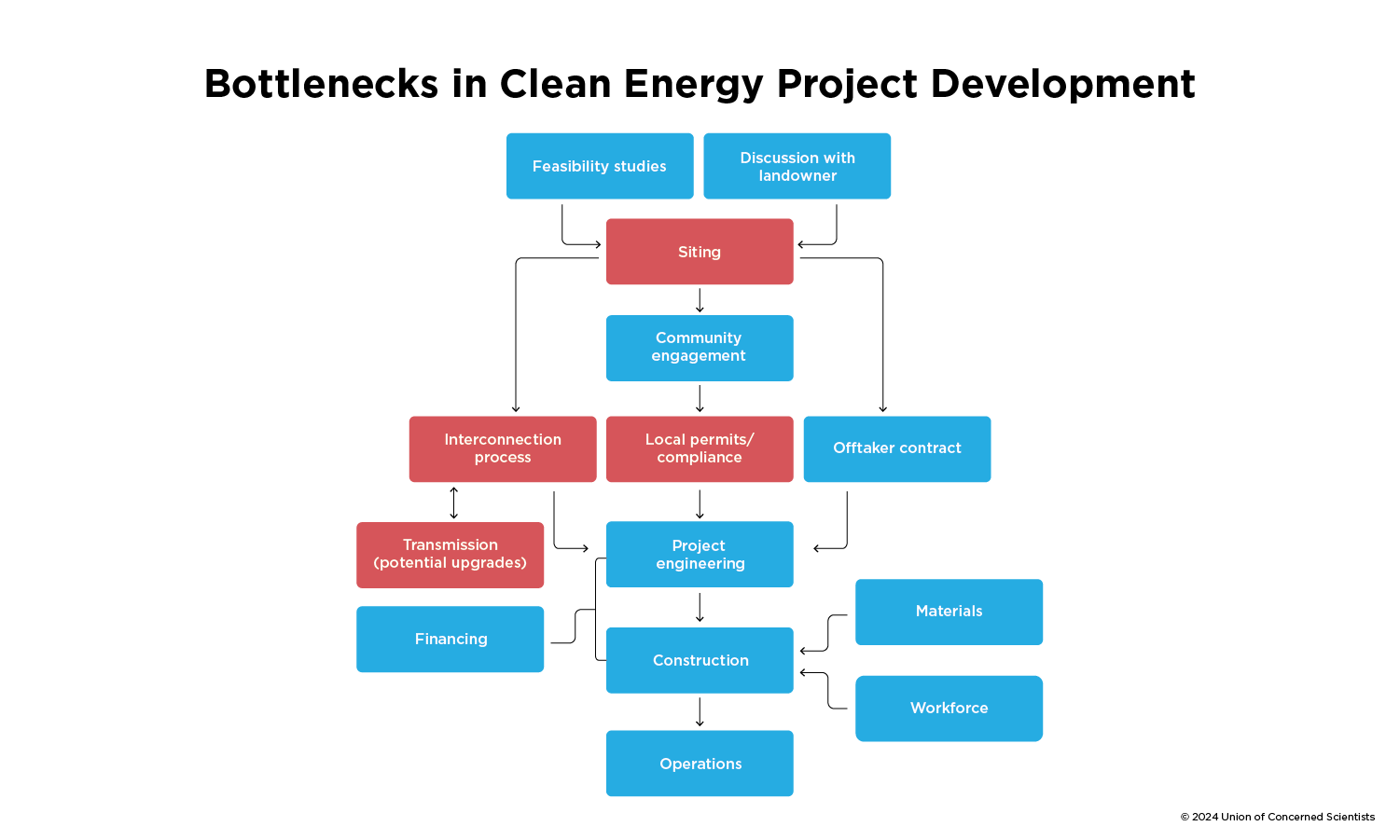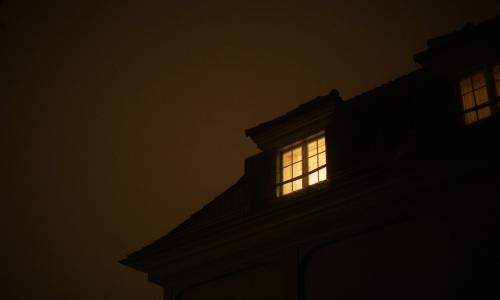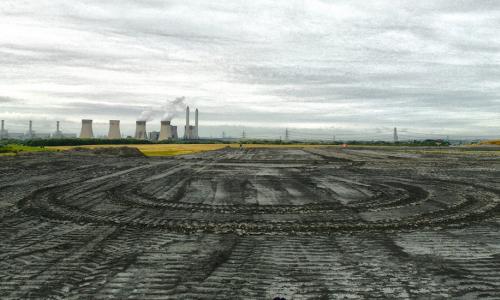For California to achieve its 2045 clean energy goals, it needs to roughly triple its clean energy capacity.
There are more than enough projects in the works to make that happen, but the state needs to address three bottlenecks that frequently delay project completion: the need for transmission and grid upgrades, the interconnection queue backlog, and siting and permitting difficulties.
Barriers and Solutions to Building Clean Energy in California
For California to achieve its 2045 clean energy goals, the state will need to roughly triple its existing energy capacity. While this may seem challenging, there are enough clean energy projects in the works to make it happen; the problem is the barriers that frequently occur in the development of these projects. California needs to prioritize working through the three bottlenecks listed below to ensure a reliable and equitable electricity grid for its people.
1. Need for Transmission and Grid Upgrades
Grid infrastructure, particularly transmission, has not kept pace with the clean energy transition. California's grid operator (CAISO) has more robust long-term planning processes than many other parts of the country, but barriers arise in the development of this planned transmission, particularly around cost and permitting.
Legislators and regulators can incentivize utilities to upgrade existing grid infrastructure, especially with grid-enhancing technologies such as dynamic line ratings and power flow controllers. This can cost-effectively increase transmission capacity in a much shorter time frame than building new transmission, which can take over a decade. Improving regional cooperation can also help optimize the construction of new transmission that connects areas with high resource potential. For example, the West-Wide Governance Pathways Initiative formed by stakeholders across the West is building a regional grid coordination entity that could enable regional transmission planning while also facilitating discussions around cost allocation and coordinated permitting procedures. California should also consider alternative funding mechanisms for transmission projects. This could include a state transmission authority, as in New Mexico, or increasing the number of transmission projects that are eligible for competitive solicitation. All processes to build out transmission should be underpinned by strong environmental reviews and early public engagement.
2. Interconnection Queue Backlog
To connect to the grid, power-generating projects must undergo interconnection studies by CAISO to assess their impact on the grid. Because CAISO has been inundated by requests in the past few years, including many that are purely speculative, the interconnection queue now has a large backlog of projects waiting for these studies, which have become more time-consuming and less accurate. The vast majority of projects in the queue are clean energy and storage.
CAISO has undertaken a policy initiative to introduce major reforms to the interconnection process, with a focus on limiting the queue intake and moving projects through the queue faster. This is a promising step towards a more efficient process that prioritizes projects aligned with available transmission capacity, commercial interest, project viability, and system need. However, CAISO still needs more equity considerations in the process, such as alternative tracks for projects serving or owned by Tribal or disadvantaged communities. For example, the Federal Energy Regulatory Commission recently granted a waiver giving a Tribal community-owned wind project more time to meet financial requirements given its unique financing structure.
3. Siting and Permitting Difficulties
California has high clean energy resource potential, but siting this infrastructure can conflict with other land uses such as conservation, agriculture, and various community needs. Project permitting can therefore face local opposition, and permitting processes for transmission in multiple jurisdictional boundaries are cumbersome.
Legislation to incentivize clean energy on the built environment (e.g., warehouse rooftops) and disturbed lands (e.g., brownfields), or the use of virtual power plants, can minimize the amount of land needed and reduce siting and permitting concerns. The state can also streamline these processes on public lands, but this path must involve robust stakeholder input and monitoring of cumulative impacts. The Desert Renewable
Energy Conservation Plan is a good example of using public lands for renewable energy, combined with accountability to both conservation objectives and local communities. Requiring early engagement with the affected communities can proactively address local concerns and help projects move forward faster.
Finally, the state should fund technical assistance programs for community-based organizations to work on meaningful engagement (e.g., by developing "community benefits agreements").




